15 Oct Blog | What Ships Leave Behind: Measuring Ultrafine Particles in the Port of Rotterdam
by Stepan Hornik Postdoc and Juliane Fry, members of the MI-TRAP Rotterdam team
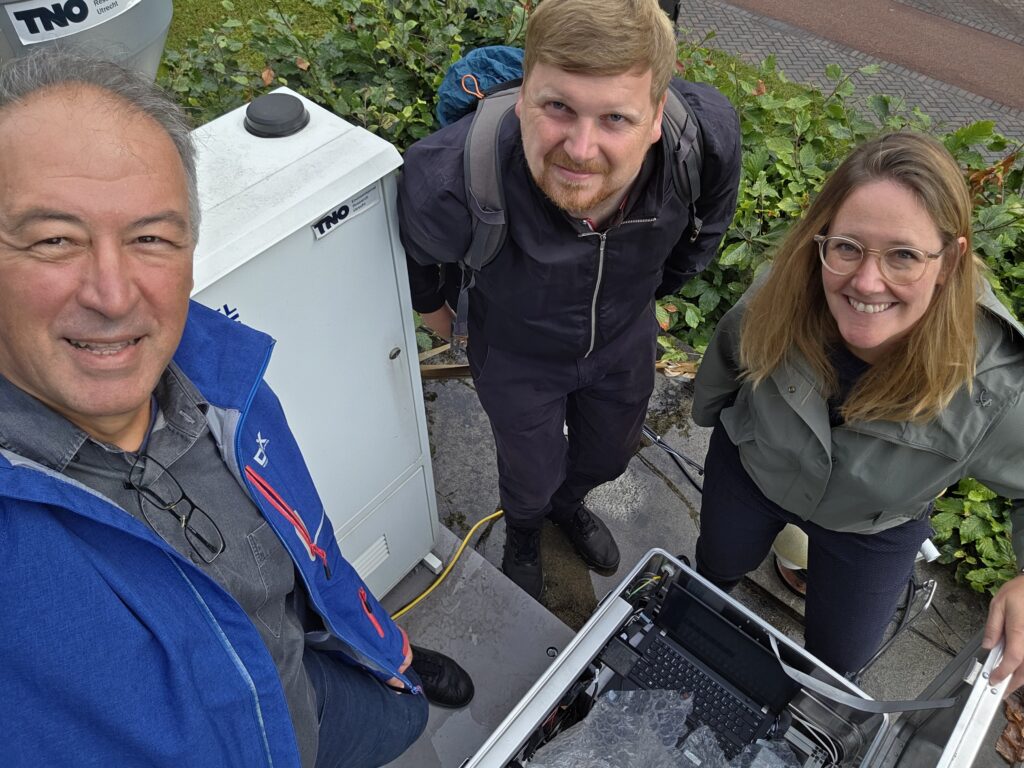
Welcome to Europe’s Largest Port
Welcome to Rotterdam, Netherlands, welcome to the largest European port and one of the largest
ports worldwide. Often called the “Gateway to Europe,” the Port of Rotterdam is a bustling hub
where ships from every corner of the globe come and go, carrying everything from cars and
containers to raw materials. Every year, about 28,000 seagoing vessels enter the Port of Rotterdam
— that’s around 80 ocean-going ships per day. Shipping traffic doesn’t just mean big boats and cargo,
it also means emissions, including ultrafine particles. In the Rijnmond area around Rotterdam, it is
estimated that more than 50% of ultrafine particulate matter emissions come from ships. These
ultrafine particles are smaller than 100 nanometers in diameter, small enough to penetrate deep into
the lungs, and even enter the bloodstream. And that is the reason why we, researchers from
Wageningen University, are focused on understanding ultrafine particle sources and concentrations
within the MI-TRAP project, in which Rotterdam serves as one of the City Pilots.
Why Ultrafine Particles Matter
Most people have experienced air pollution, but ultrafine particles are a hidden part of the problem.
Unlike the larger dust or soot particles that you can see in the air, ultrafine particles are invisible to
the naked eye. But also because of this small size that renders them invisible, they behave differently
in the body: instead of getting trapped in the nose or throat, they can slip deep into the lungs and
even cross into the bloodstream. Once there, they contribute to respiratory and cardiovascular
problems. What makes them especially tricky is that they don’t just come in one type. Their chemical
composition depends on the source, from ship engines to airplanes to cars to industry, and that’s
why it’s so important to make comprehensive measurements from all sources. With a detailed
accounting of what’s in the air, we can figure out which emissions matter most, and how to reduce
them.
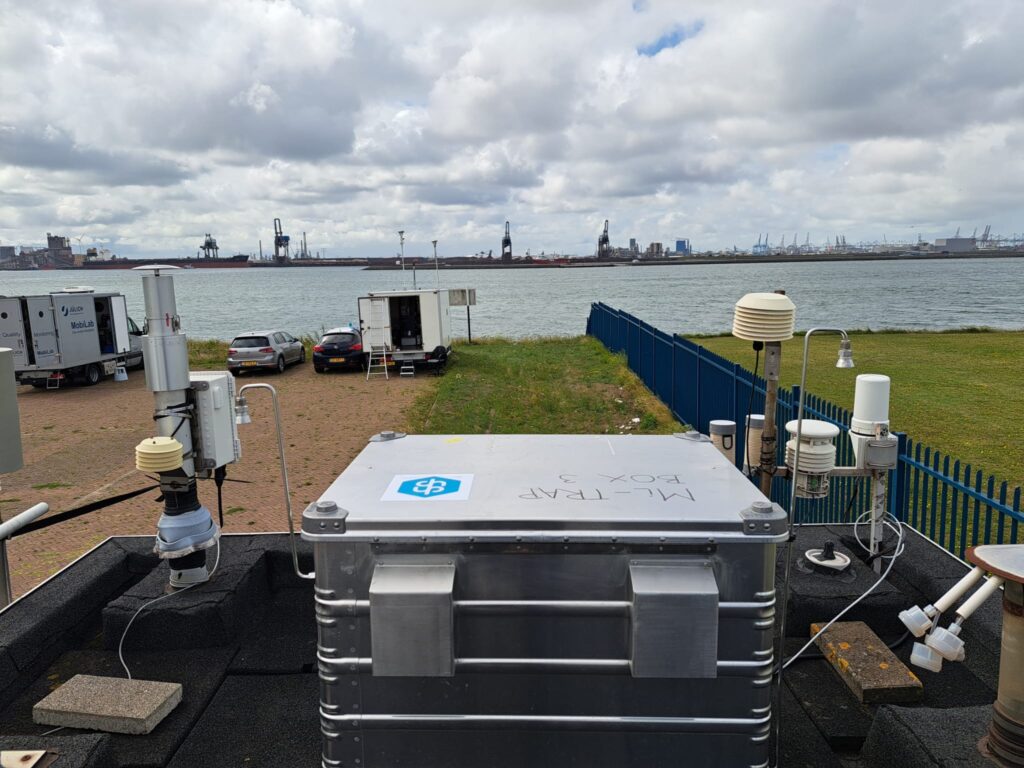
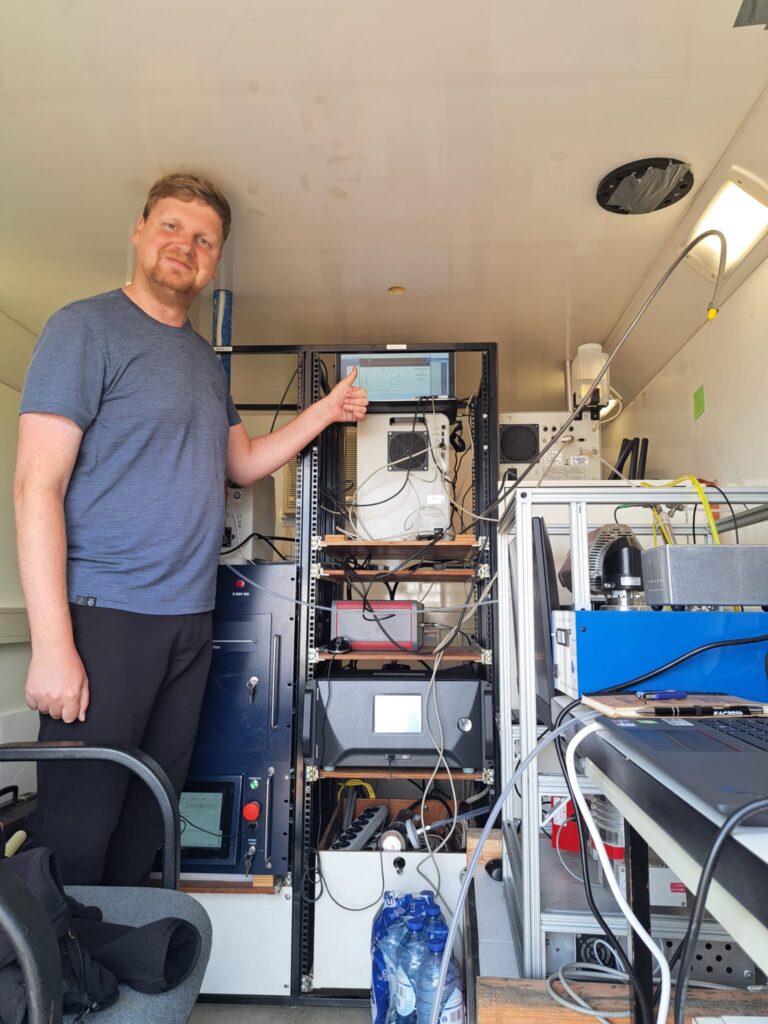
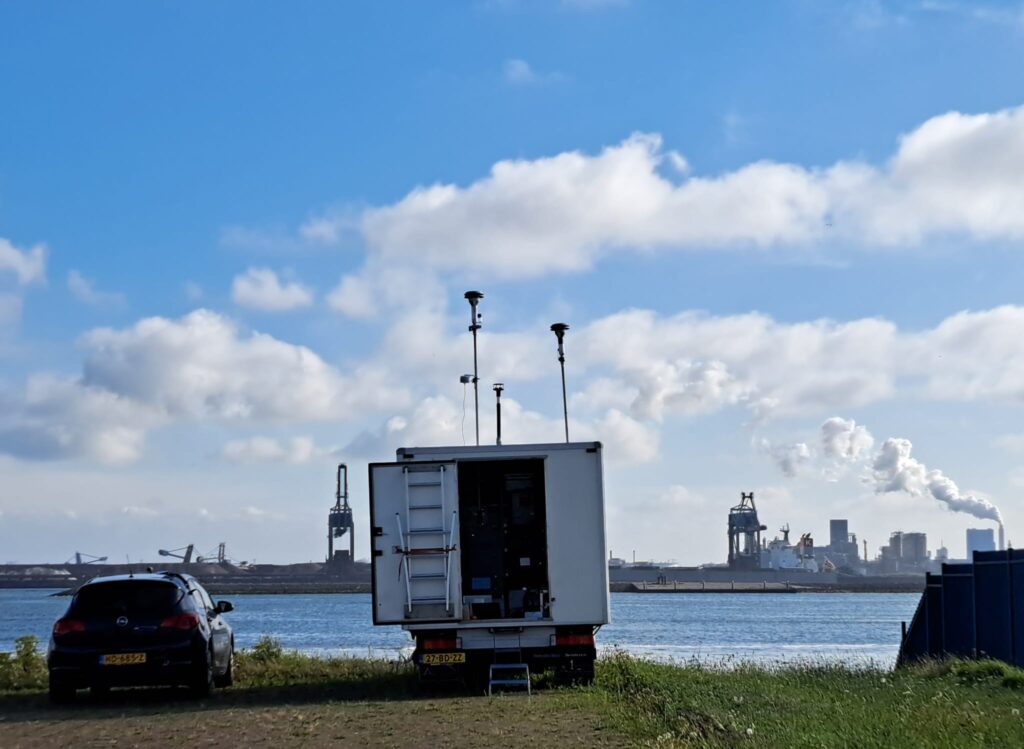
Our Measurement Site at Hoek van Holland
To capture this detailed picture of ship-related emissions, we set up a measurement site at Hoek van
Holland, right at the mouth of the Maas River opposite Europoort (see photos). From there, we can
watch ships cruise past while our instruments keep track of what they leave behind in the air. To do
that, we rely on a setup of high-precision instruments that each tell a different part of the story.
Together they help us see not just how many ultrafine particles are in the air, but also what they’re
made of, which helps us discern where they come from.
The ACSM (Aerosol Chemical Speciation Monitor) tells us what ultrafine particles are made of by
analyzing their chemical composition. This helps us see whether they come from ship exhaust or
other sources. The Xact measures metals in the airborne particles, which can be linked to fuel and
engine wear. By spotting which metals are present, we can trace back some of the fingerprints of
shipping activity. The AE33 aethelometer detects black carbon, a key component of engine exhaust
and a major contributor to ultrafine particle pollution. It shows us how much soot is in the air and
when spikes occur as ships pass by. The SMPS (Scanning Mobility Particle Sizer) provides detailed size
distributions of particles, including ultrafines. This is important because the smaller the particles, the
deeper they can penetrate into our lungs. The CPC (Condensation Particle Counter) counts how many
particles are in the air overall. It’s a simple but powerful way to show how busy ship traffic affects
particle numbers in real time. Finally, a CO₂ monitor tracks all combustion-related emissions and
helps connect the particle data back to specific combustion sources, via characteristic ratios for
different engine types.
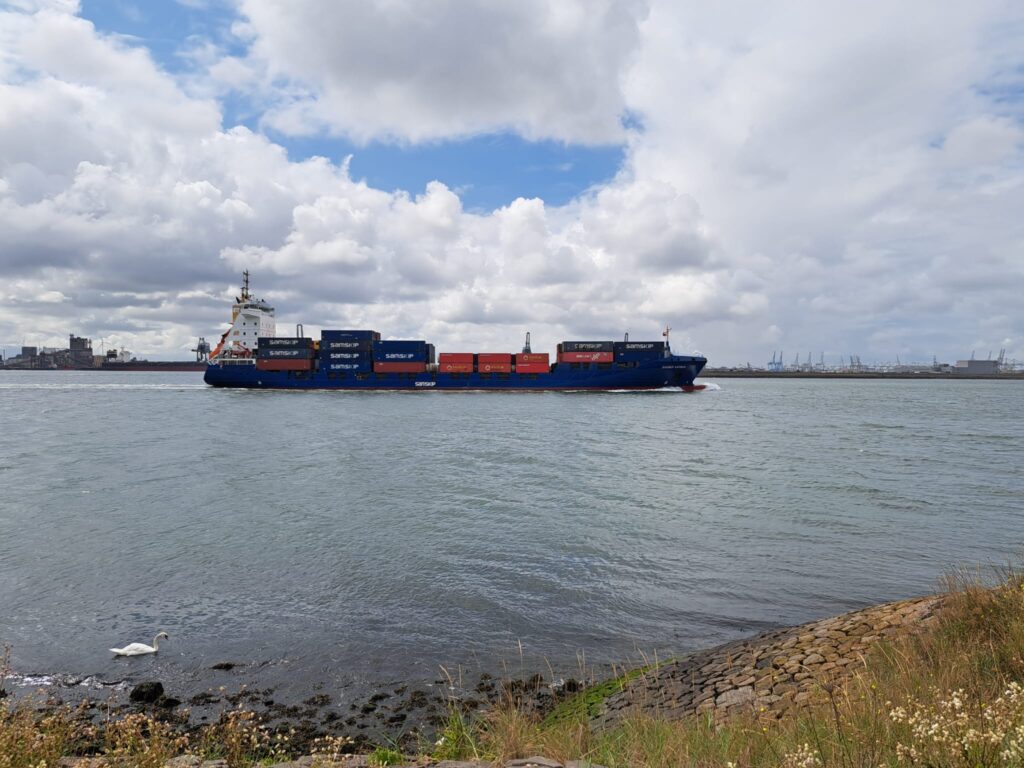
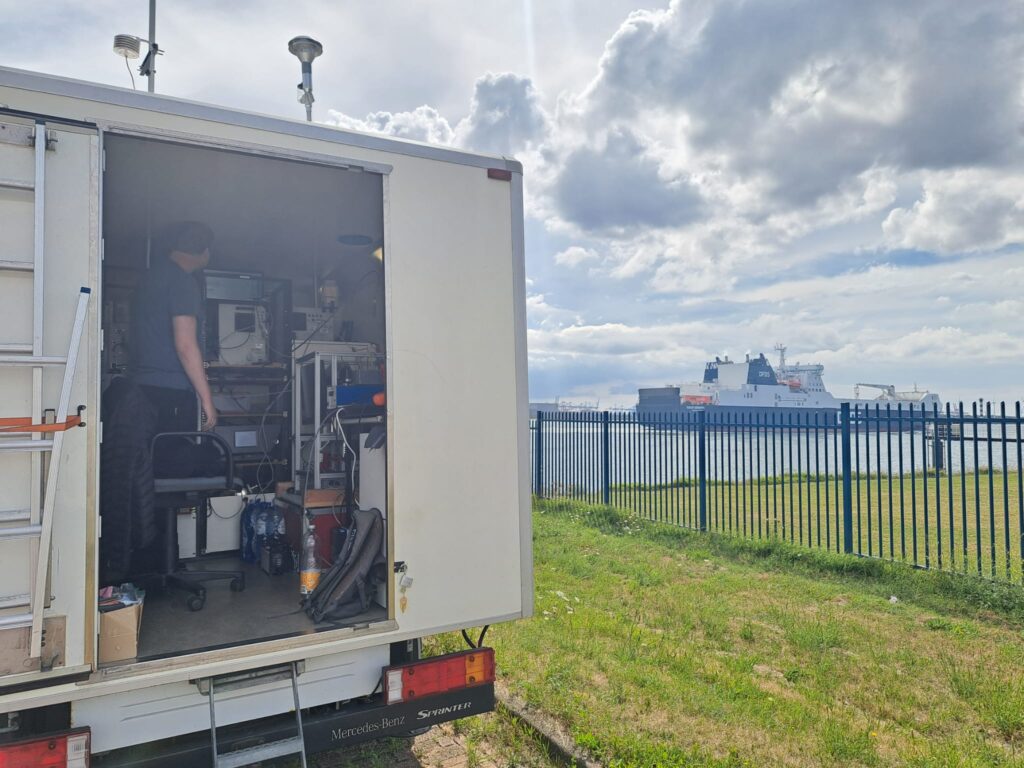
When Ships Pass By
Out at Hoek van Holland, the science sometimes feels very real. When a big ship passes by, you don’t
just see it on the horizon, you can hear the rumble of its engines, smell the exhaust, and even feel
the vibration in the air. Our instruments notice it too. But there’s a catch: the wind direction makes
all the difference. To capture the ship plumes properly, we need the wind to blow from the west. On
those days, the signals on our screens spike: the Xact shows high concentrations of vanadium and
nickel, classic fingerprints of ship fuel, while the ACSM picks up more sulfate particles. It’s a clear sign
that the ships are not just moving goods, but also leaving their mark in the air. And it’s not just us out
there. Noisy seagulls are constant companions, swans glide past on quiet mornings, and once, to our
surprise, a curious seal popped up to take a look at what we were doing.
Why This Research Matters for Rotterdam
All of this matters because Rotterdam isn’t just a port, it’s also home to more than a million people in
the surrounding region. When ships release ultrafine particles, those tiny pollutants don’t just stay
over the water; they drift into the air that residents breathe every day. While you can’t see them
with the naked eye, these particles can affect air quality and health, especially for people who live
close to busy shipping routes. By measuring and understanding what’s in the air, we can better
assess the impact of ship traffic on local communities and support efforts to make this largest port in
Europe, also one of the cleanest.
Looking Ahead
The work we’re doing in Rotterdam is just the beginning. By combining detailed measurements with
real ship traffic data, we can start to untangle which emissions come from where, and how they
affect the air people breathe. These insights don’t stay on our laptops, they can help shape future
policies for cleaner shipping, from using alternative fuels to installing shore power so ships don’t
need to run their engines while docked. Rotterdam is one of the first City Pilots in the MI-TRAP
project, so we will compare what we find here to the other port City Pilots (Athens-Piraeus, Lisbon,
Dunkirk, and Copenhagen), and we hope the lessons learned here can inspire other ports around the
world facing the same challenges. In the end, the goal is simple: to keep the goods flowing through
Europe’s busiest port while also ensuring that the air around it is healthy and safe for everyone.


